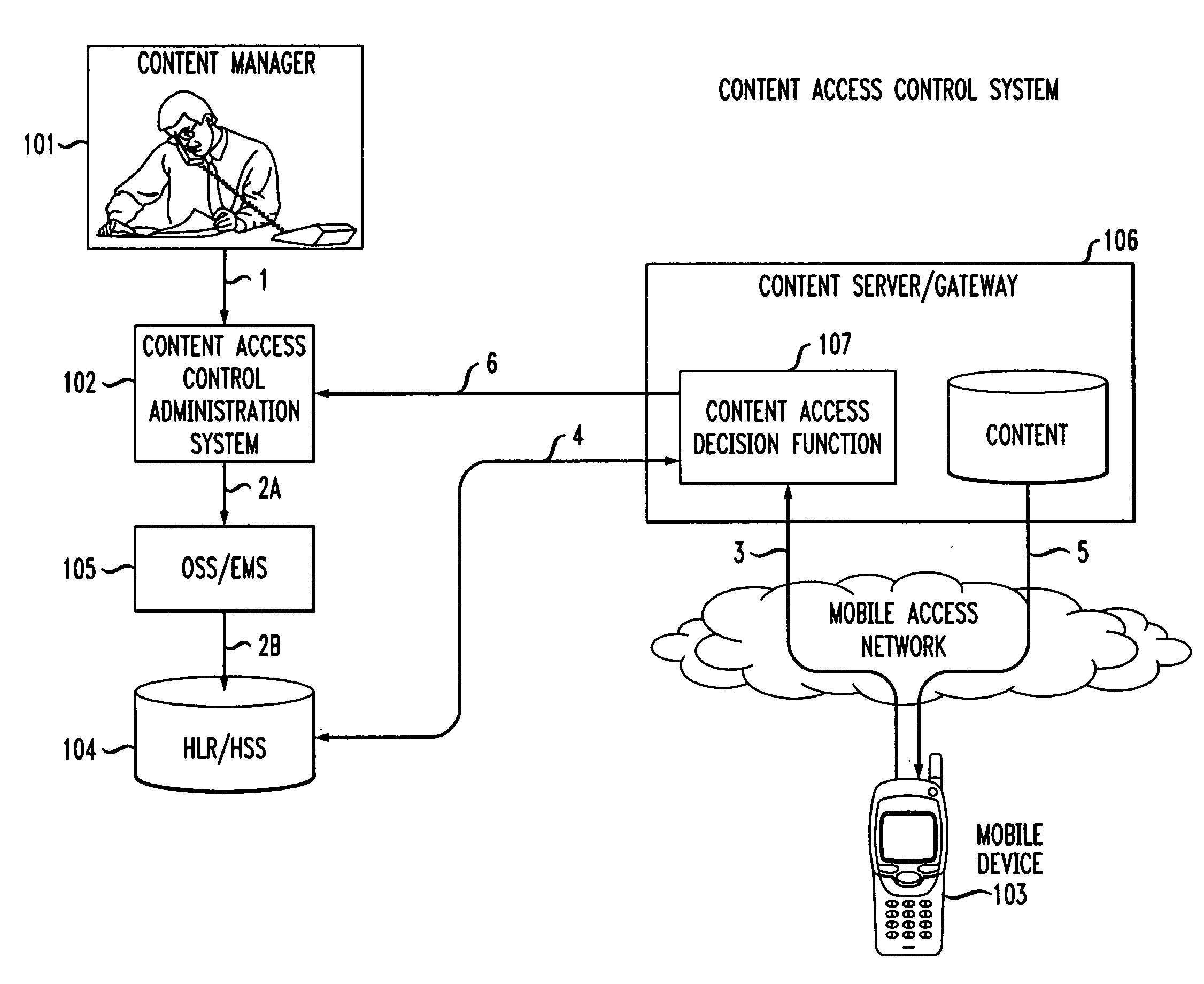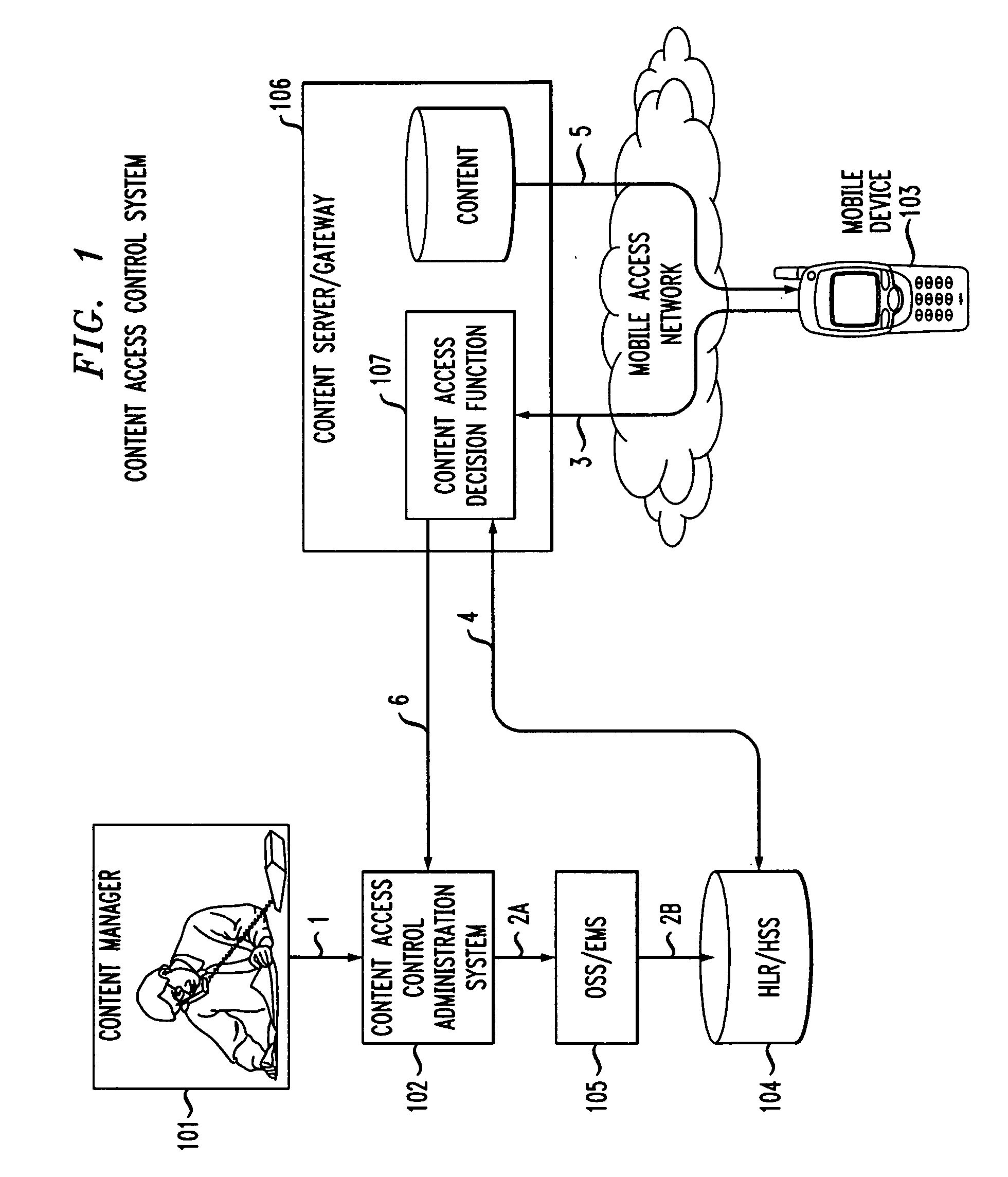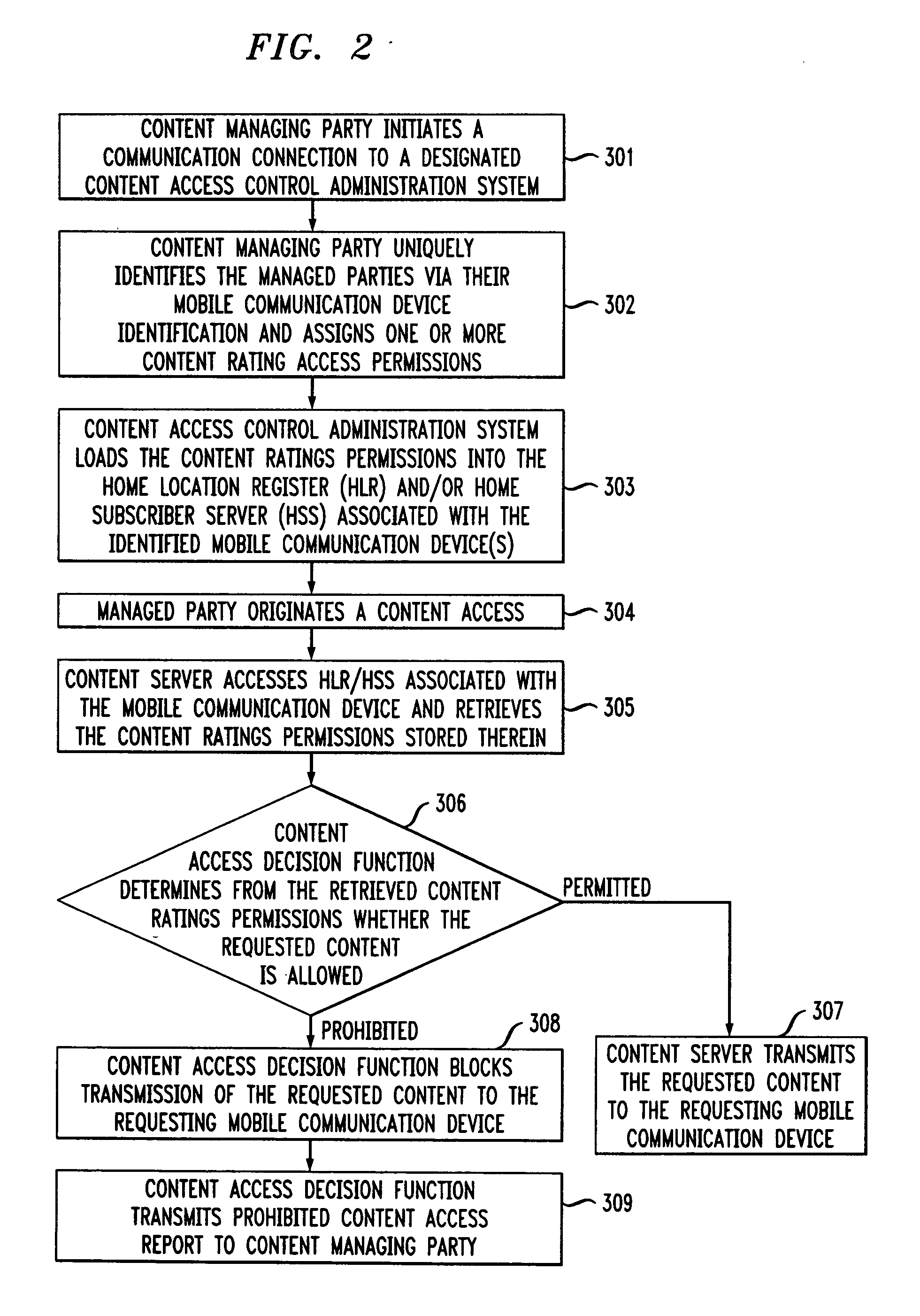Content access control system for a mobile communication network
a content access control and mobile communication technology, applied in the field of mobile communication networks, can solve the problems of fragmented content industry, inability to provide inappropriate content, not to be purchased, downloaded, or streamed to the mobile terminal devices of young subscribers, etc., and achieve the effect of less traffic congestion
- Summary
- Abstract
- Description
- Claims
- Application Information
AI Technical Summary
Benefits of technology
Problems solved by technology
Method used
Image
Examples
Embodiment Construction
Content Access Control System Architecture and Message Flow
[0018] The content management activity applies to an existing management relationship (such as parent-child or employer-employee) and consists of a content managing party determining an approved set of categories for content access for one or more managed parties. This process can be applied to diverse applications including, but not limited to, a parent determining appropriate content for their children or an employer determining appropriate content for their employees when the employee uses an employer-supplied mobile phone. The content management activity is predicated on the use of a content rating system that characterizes the nature of the content that is stored on content servers or that is accessed via gateways which serve to manage backend content. In any configuration, there is a content rating assigned to the content, and this content rating is used to filter the content by regulating which subscribers can acces...
PUM
 Login to View More
Login to View More Abstract
Description
Claims
Application Information
 Login to View More
Login to View More - R&D
- Intellectual Property
- Life Sciences
- Materials
- Tech Scout
- Unparalleled Data Quality
- Higher Quality Content
- 60% Fewer Hallucinations
Browse by: Latest US Patents, China's latest patents, Technical Efficacy Thesaurus, Application Domain, Technology Topic, Popular Technical Reports.
© 2025 PatSnap. All rights reserved.Legal|Privacy policy|Modern Slavery Act Transparency Statement|Sitemap|About US| Contact US: help@patsnap.com



